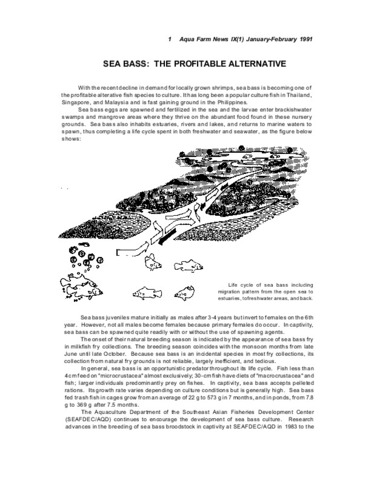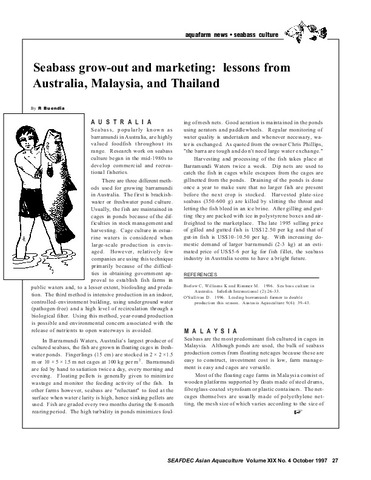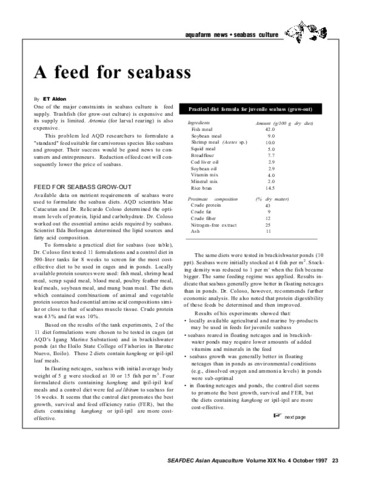An incidence of swimbladder stress syndrome in hatchery-reared sea bass (Lates calcarifer) larvae
- Global styles
- MLA
- Vancouver
- Elsevier - Harvard
- APA
- Help

View/
Date
1986Page views
2,509ASFA keyword
AGROVOC keyword
Taxonomic term
Metadata
Show full item record
Share
Abstract
This paper describes an incidence of swimbladder malfunction causing high positive buoyancy and mass mortality in 2-week-old sea bass (Lates calcarifer) larvae reared in an outdoor hatchery tank under conditions of high ambient temperature (26–32°C) and salinity (32–34‰), and a dense diatom bloom. The problem occurred soon after handling the larvae by seine and bucket, and seemed to have been a case of swimbladder stress syndrome (SBSS). The development of the swimbladder in sea bass larvae is briefly described.
Description
Contribution No. 166 from the SEAFDEC Aquaculture Department.
Suggested Citation
Bagarinao, T., & Kungvankij, P. (1986). An incidence of swimbladder stress syndrome in hatchery-reared sea bass (Lates calcarifer) larvae. Aquaculture , 51(3-4), 181-188. https://doi.org/10.1016/0044-8486(86)90308-X
Type
ArticleISSN
0044-8486Collections
- Journal Articles [1258]
Related items
Showing items related by title, author, creator and subject.
-
Sea bass: The profitable alternative
Southeast Asian Fisheries Development Center, Aquaculture Department (Aquaculture Department, Southeast Asian Fisheries Development Center, 1991) -
Seabass grow-out and marketing: lessons from Australia, Malaysia, and Thailand
Buendia, Romeo (Aquaculture Department, Southeast Asian Fisheries Development Center, 1997) -
A feed for seabass
Aldon, E. T. (Aquaculture Department, Southeast Asian Fisheries Development Center, 1997)One of the major constraints in seabass (Lates calcarifer) culture is feed supply. Details are given of work conducted at AQD regarding the formulation of a 'standard' feed suitable for carnivorous species like the seabass ...






